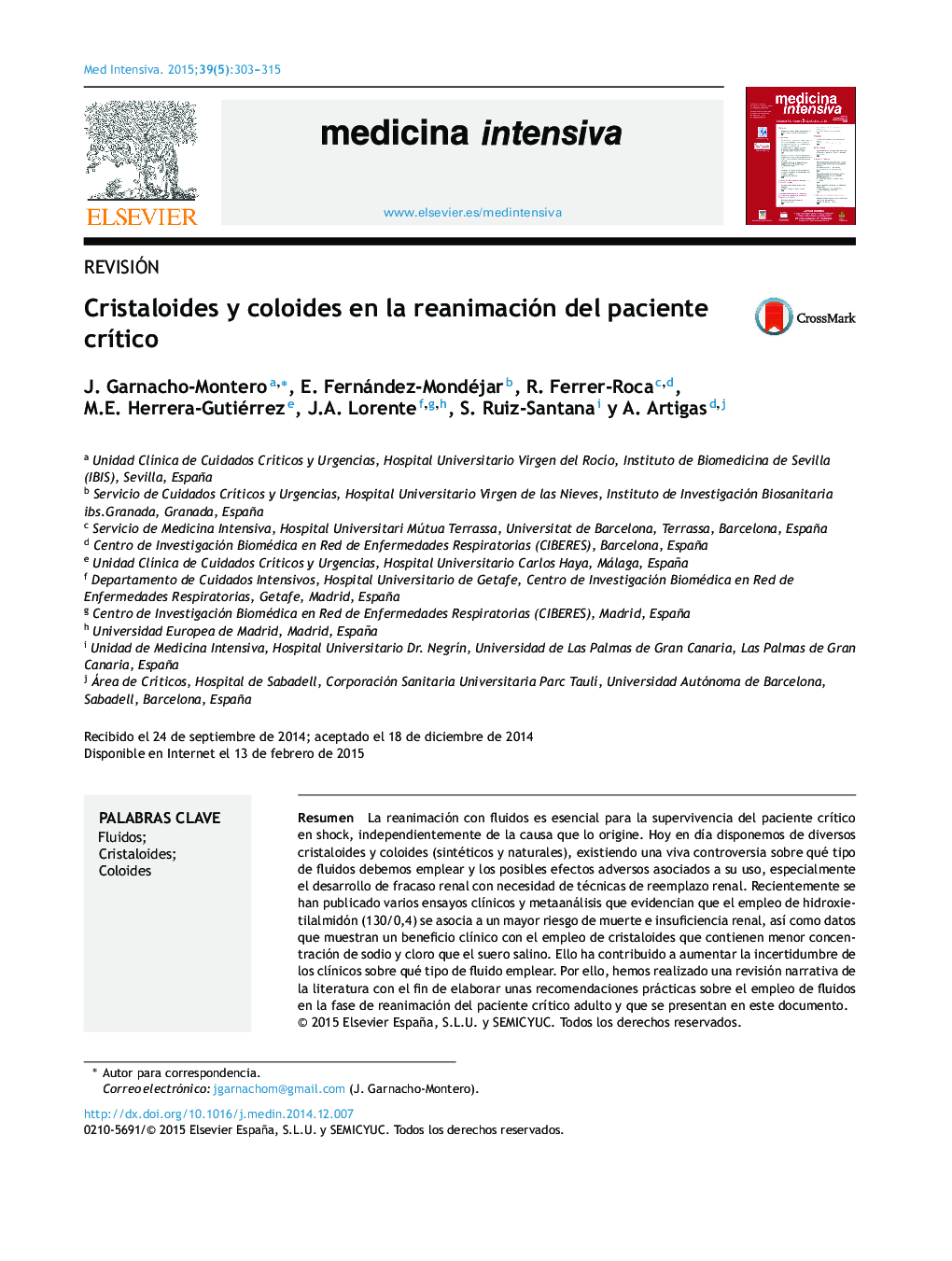| Article ID | Journal | Published Year | Pages | File Type |
|---|---|---|---|---|
| 3112679 | Medicina Intensiva | 2015 | 13 Pages |
ResumenLa reanimación con fluidos es esencial para la supervivencia del paciente crítico en shock, independientemente de la causa que lo origine. Hoy en día disponemos de diversos cristaloides y coloides (sintéticos y naturales), existiendo una viva controversia sobre qué tipo de fluidos debemos emplear y los posibles efectos adversos asociados a su uso, especialmente el desarrollo de fracaso renal con necesidad de técnicas de reemplazo renal. Recientemente se han publicado varios ensayos clínicos y metaanálisis que evidencian que el empleo de hidroxietilalmidón (130/0,4) se asocia a un mayor riesgo de muerte e insuficiencia renal, así como datos que muestran un beneficio clínico con el empleo de cristaloides que contienen menor concentración de sodio y cloro que el suero salino. Ello ha contribuido a aumentar la incertidumbre de los clínicos sobre qué tipo de fluido emplear. Por ello, hemos realizado una revisión narrativa de la literatura con el fin de elaborar unas recomendaciones prácticas sobre el empleo de fluidos en la fase de reanimación del paciente crítico adulto y que se presentan en este documento.
Fluid resuscitation is essential for the survival of critically ill patients in shock, regardless of the origin of shock. A number of crystalloids and colloids (synthetic and natural) are currently available, and there is strong controversy regarding which type of fluid should be administered and the potential adverse effects associated with the use of these products, especially the development of renal failure requiring renal replacement therapy. Recently, several clinical trials and metaanalyses have suggested the use of hydroxyethyl starch (130/0.4) to be associated with an increased risk of death and kidney failure, and data have been obtained showing clinical benefit with the use of crystalloids that contain a lesser concentration of sodium and chlorine than normal saline. This new information has increased uncertainty among clinicians regarding which type of fluid should be used. We therefore have conducted a review of the literature with a view to developing practical recommendations on the use of fluids in the resuscitation phase in critically ill adults.
